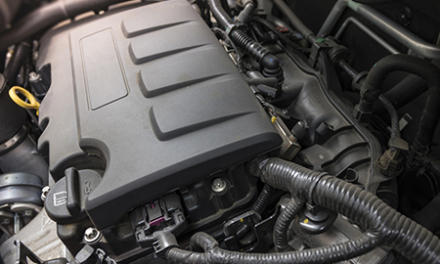In an ideal world, a scientifically perfect air/fuel ratio for a gasoline engine with an electric fuel pump is 14.6:1; the mix should contain 14.6 parts air for each 1 part of fuel. However, in the real world, things don’t work perfectly. Your ideal ratio is influenced by factors such as engine configuration, air temperature, throttle position and whether your engine is naturally aspirated or turbocharged. As a result, recommended air/fuel ratios are generally lower than this ideal target.
Why Is Air/Fuel Ratio Important?
Calibrating your ratio correctly can harm or prolong the durability of your engine and its components, including the fuel delivery system. Having the correct amounts of air and fuel enables complete combustion, which produces more power, maximizes efficiency and reduces harmful byproducts caused by incomplete combustion. A higher air/fuel ratio indicates a richer mixture with less air than the 14.6:1 ideal.
A lower air/fuel ratio creates a leaner mixture with more air, which causes higher combustion temperatures. This, in turn, can raise exhaust gas temperatures and produce higher amounts of toxic nitrogen oxide compounds that harm the atmosphere. That’s why the operating air/fuel ratio is usually lower than the ideal–this helps to control the combustion temperatures and exhaust gases.
What Air/Fuel Ratio Should I Use?
For a naturally aspirated (unmodified) engine, 13.0:1 is usually recommended. However, factory-tuned vehicles may run slightly more rich (with a lower ratio) at higher RPMs for better reliability and to adjust for the more demanding conditions.
If an engine is turbocharged, then the compressed air increases the air density, which leads to a denser mixture of air and gasoline. If the amount of gas in the mixture is not increased accordingly–that is, if the mixture is too lean for the engine–then the peak cylinder pressure and combustion temperature rise; this raises the likelihood of knock. Thus, most recommend that turbocharged engines maintain a ratio around 12.0:1. Some individuals choose to vary the ratio from 14.0:1 to 10.5:1 depending on the RPM, as described above, but an overly rich mixture has been known to cause problems with hesitation and throttle response; this can be fixed by resetting the fuel mapping to somewhere around 11.5:1 or 12.0:1.
In conclusion, when determining your best air/fuel ratio, you may want to consider how your engine is aspirated and whether you prefer having more power on demand or having a longer engine life.






